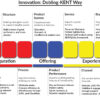
The healthcare sector of India is a fast-emerging industry that is expected to reach a value of $638 billion in 2025 from $400 billion in 2024, according to Way2Wealth Brokers Pvt. Ltd. The hospital segment takes center stage and accounts for nearly 80% of total healthcare spending. As the hospital segment alone is poised to grow by a CAGR of 8% until 2032, efficiency ratios have proven invaluable for operational performance and investing insight.
Previously, commentators have looked at revenue expansion overall and bed increases, but increasingly, ARPOB (Average Revenue per Occupied Bed), occupied beds, and EBITDA margins have become the real measures of hospital effectiveness. Unlike subjective or hard-to-verify proxies such as “revenue per doctor,” these ones routinely appear on a periodic basis in annual reports and investor presentations and so facilitate comparison.
ARPOB: The Key Efficiency Metric
Average Revenue per Occupied Bed (ARPOB) is revenue per bed per occupied day and acts as a proxy measure for price power, case complexity, and patient mix.
Apollo Hospitals, India’s largest private network of hospitals, consistently reports an ARPOB of ₹55,000–60,000 in metros, supported by high-value tertiary care.
Fortis reports ARPOB at around ₹48,000–50,000, signifying a mixture of specialty services and mid-level affordability.
Narayana Health, with its theme of affordability and access, has significantly lower ARPOB of close to ₹30,000–32,000, demonstrating its volume-based approach.
KIMS Hospitals, which is a southern regional giant in India, maintains ARPOB at ₹30,000–35,000, similar to its market position in tier-2 cities.
Medanta – The Medicity, known for its quaternary care and medical tourism, attracts higher ARPOB, typically over ₹50,000, reflective of its specialty-based approach.
Specialized and high-end tertiary services by high ARPOB hospitals target oncology, organ transplant, heart surgery, and high-end tertiary services. Lower ARPOB players balance margin and affordability, mostly in cities of tiers 2 and 3.
Occupancy Rates: Balancing Scale and Efficiency
Occupancy rate—the proportion of filled beds at any point in time that are available for use—is another profitability driver. Hospitals with very high ARPOB but low occupancy have the potential for underutilization, and those with high occupancy but low ARPOB have margin issues.
Apollo Hospitals maintain 65–70% occupancy, bridging premium prices and volume.
Narayana Health, due to its affordability-led model, typically has higher occupancies of 75–80%, creating volume efficiency.
Fortis maintains occupancy of 65–70%, reflecting its presence in metros and tier-1 markets.
Kauvery and Shalby, regional players, manage to reach 70–75% full utilisation because of successful regional brand strength and specialisation.
The patterns of use are seasonal, and the load is heaviest during monsoon and winter because of infectious conditions and lowest in summer. Year-round stability of use is paramount for economic sustenance of small hospitals.
EBITDA Margins: The Profitability Lens
EBITDA margins—EBITDA, or earnings before interest, taxes, depreciation, and amortization, expressed as a percentage of revenue—give a sense of real operating efficiency.
Apollo Hospitals has EBITDA margins of 22–24%, which reflect its scale and price power.
Fortis offers 18–20%, marginally lower due to more mid-market positioning.
Narayana Health, with lower ARPOB, maintains 16–18% margins by cost optimization and high occupancy leverage.
KIMS Hospitals has shown 28–30% margins, best in the industry, due to regional efficiency and disciplined cost control.
Medanta enjoys margins of around 20–22%, rooted in high-value procedures. To investors, margins also provide an indication of whether revenues yield sustainable hospital profits. To administrators, they provide insight into how well operations, staff, and costs perform relative to patient volume.
What Small Hospitals Can Learn
Smaller and midsize hospitals, often struggling against the current of corporate networks, do not compete on a like basis against these indicators of efficiency.
First, specialization-based focus can greatly enhance ARPOB. Shalby Hospitals, for instance, started its journey as a joint-replacement center and generates more revenue per patient than a similar-size general hospital. Small hospitals have the potential to enhance case complexity and the price they command by creating “centers of excellence” in specialties like orthopedics, oncology, or IVF.
Secondly, community trust and local leadership may stabilize occupancy. The corporate hospitals compete on brand generally, but small hospitals have a chance of success by becoming the most trustworthy provider of healthcare within the geography. Patient flow is stabilized by providing round-the-clock services, specific health camps, and linkages with local general physicians.
Third, lean operations can secure margins. Small hospitals have the advantage of lower overhead compared to giant tertiary behemoths. By adopting digital health solutions (teleconsultations, cloud patient records, AI diagnosis), they keep costs low but expand reach.
Fourth, there is a huge tier-2 and tier-3 opportunity. The metros are focussed on by the giant chains, but India’s growing middle class in the smaller cities is actually insurance-covered and paying for quality care. Small hospitals have the potential to dominate these markets by delivering discounted specialty care with personalized service.
Risks and Limitations
Though efficiency is possible for small hospitals, there are dangers. Over-reliance on a limited specialty may hamper resilience to fluctuations in demand. High ARPOB models have the potential for criticism on affordability, and zeal for occupancy may affect quality adversely. Staff retention is also more difficult for small hospitals, given that giant chains have more to offer in payment and brand visibility.
Nevertheless, by aligning with insurance models like Ayushman Bharat, leveraging telemedicine, and investing in training, small hospitals have the potential to cross these hurdles.
Summary
The Indian hospital sector offers a stark contrast in models of efficiency. The giant chains emphasize accessibility and scale and display moderate ARPOB and high occupation, but specialty-based hospitals have realized high ARPOB and improved margins. The lesson for the small hospitals is not to compete on the basis of scale, but to leverage specialization, optimize occupation, and maintain margins by having lean operating models. In a sector short 2.4 million beds and doubled needs for healthcare workers by 2030, efficiency will count as much as growth. By borrowing from corporate giants and specialty leaders, small hospitals have the potential to become agile, profitable, and patient-focus players in India’s transforming healthcare sector.
Leave a reply
















Dear Dr. Prahlada N.B Sir,
Thank you for your insightful blog post on Indian hospital efficiency measures, particularly Average Revenue Per Occupied Bed (ARPOB), occupancy, and margins.
ARPOB is a key financial metric that indicates the revenue generated per occupied bed in a hospital, calculated as inpatient revenue divided by occupied bed days.
Your analysis offers valuable insights for small hospitals to enhance operational performance and sustainability by:
– *Specialization*: Focusing on specific areas like orthopedics or oncology to increase ARPOB and improve margins
– *Community Trust*: Building trust through round-the-clock services and health camps to stabilize occupancy
– *Lean Operations*: Adopting digital health solutions and telemedicine to reduce costs and expand reach
– *Dominating Tier-2 and Tier-3 Markets*: Delivering discounted specialty care with personalized service to carve out a niche
Your blog post is a valuable resource for small hospitals, providing actionable strategies to improve efficiency and sustainability.
Thank you for sharing your expertise with the healthcare community.
Reply